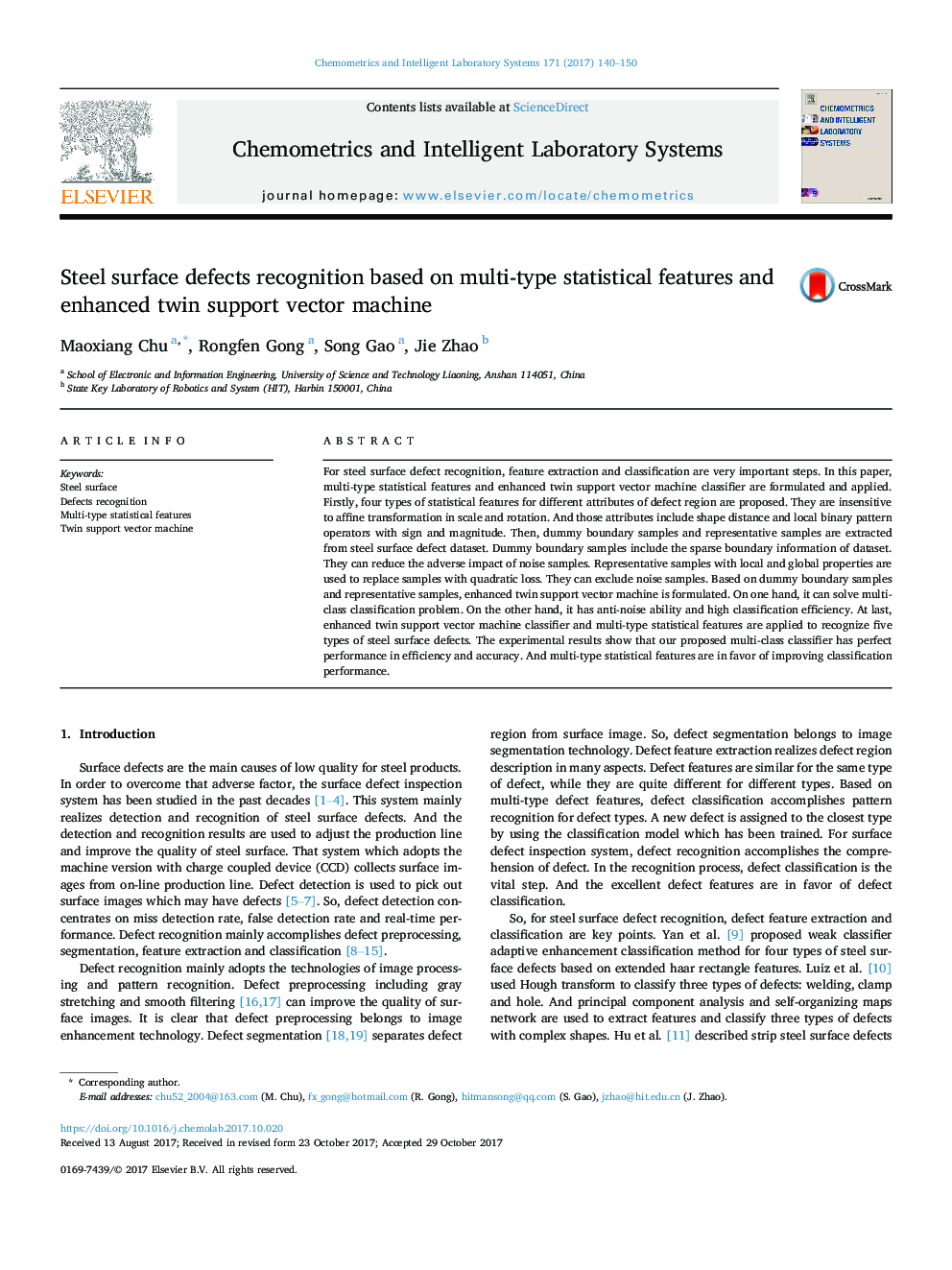| Article ID | Journal | Published Year | Pages | File Type |
|---|---|---|---|---|
| 7562435 | Chemometrics and Intelligent Laboratory Systems | 2017 | 11 Pages |
Abstract
For steel surface defect recognition, feature extraction and classification are very important steps. In this paper, multi-type statistical features and enhanced twin support vector machine classifier are formulated and applied. Firstly, four types of statistical features for different attributes of defect region are proposed. They are insensitive to affine transformation in scale and rotation. And those attributes include shape distance and local binary pattern operators with sign and magnitude. Then, dummy boundary samples and representative samples are extracted from steel surface defect dataset. Dummy boundary samples include the sparse boundary information of dataset. They can reduce the adverse impact of noise samples. Representative samples with local and global properties are used to replace samples with quadratic loss. They can exclude noise samples. Based on dummy boundary samples and representative samples, enhanced twin support vector machine is formulated. On one hand, it can solve multi-class classification problem. On the other hand, it has anti-noise ability and high classification efficiency. At last, enhanced twin support vector machine classifier and multi-type statistical features are applied to recognize five types of steel surface defects. The experimental results show that our proposed multi-class classifier has perfect performance in efficiency and accuracy. And multi-type statistical features are in favor of improving classification performance.
Related Topics
Physical Sciences and Engineering
Chemistry
Analytical Chemistry
Authors
Maoxiang Chu, Rongfen Gong, Song Gao, Jie Zhao,
